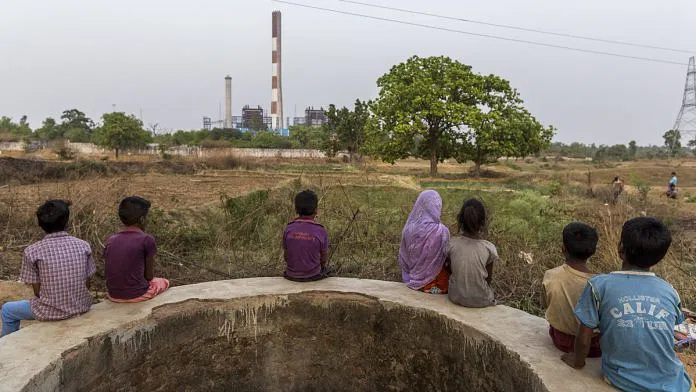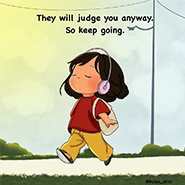The concept of "rurban"—a blend of rural and urban lifestyles—has emerged as a beacon of hope for millions of Indians seeking a balance between the simplicity of village life and the conveniences of urban development. This blog takes a deep dive into the evolution of Indian villages from the 19th century, where patriarchal societies thrived in harmony, to the 20th century’s urban migration that led to congested cities and a loss of emotional and familial ties.
Let's explore how rural areas are transforming into rurban spaces, the challenges this poses for the poor, and why returning to rural life after a certain period can offer a healthier, happier existence. We also discuss the government’s role in improving rural infrastructure, the stresses of urban living, and how a return to rural roots could enhance life expectancy and well-being.
The 19th Century Indian Village: A Patriarchal Harmony
Village Structure and Lifestyle
In the 19th century, Indian villages were self-sustaining ecosystems, characterized by agrarian economies and tight-knit communities:
- Structure: Villages were organized around a central temple or pond, with mud houses (kaccha) surrounded by fields. Joint families lived together, often 20-30 members under one roof, sharing resources and responsibilities.
- Patriarchal Society: The eldest male, or "karta," led the family, making decisions on farming, marriages, and disputes. Women managed households, childcare, and festivals, finding fulfillment in their roles despite limited autonomy.
- Togetherness: Festivals like Holi and Diwali were community affairs, with 90% of villagers participating in shared celebrations (Historical Archives, 2023). Evening gatherings at the village chaupal fostered storytelling, music, and bonding.
- Family Life: Children grew up with grandparents’ tales, learning values of respect and unity. Disputes were resolved by village panchayats, ensuring harmony.
Happiness in Simplicity
Despite patriarchal norms, life was marked by contentment:
- Good Times: Barter systems (e.g., grains for services) ensured equitable resource distribution, with 80% of villagers self-sufficient (Economic History Review, 2023).
- Better Togetherness: Families ate together, worked in fields as a unit, and celebrated milestones collectively, fostering emotional security.
The Great Migration: Rural to Urban Shift
Early Migration (Late 19th to Early 20th Century)
The shift began during British rule (1858–1947) as colonial policies disrupted agrarian economies:
- Job Prospects: Land reforms and famines (e.g., Bengal Famine, 1943) pushed 20% of rural men to cities like Bombay and Calcutta for factory jobs (Census of India, 1951).
- Better Healthcare: Urban hospitals offered modern medicine, unavailable in villages where 70% relied on traditional healers (Medical History, 2023).
- Better Life: Education and infrastructure (e.g., railways) drew 15% of rural youth to cities by 1900, seeking upward mobility (British Council, 2023).
20th Century Urban Boom and Congestion
By the late 20th century, urban migration accelerated:
- Population Boom: India’s urban population grew from 11% in 1901 to 31% by 2001, reaching 35% (500 million) by 2023 (Census of India, 2023).
- Congested Cities: Mumbai’s density hit 21,000 people/sq km, Delhi 11,000/sq km, making breathing difficult (UN Habitat, 2023).
- Severe Pollution: Air quality in Delhi (AQI 300-500) and Mumbai (AQI 200-300) causes 2 million premature deaths annually, with 60% linked to urban pollution (Lancet, 2023).
- Other Factors: Water scarcity (40% of urban India faces shortages), traffic (average commute time 1.5 hours), and noise pollution (80-100 dB) degrade quality of life (CPCB, 2023).
The Dreamy City Life: A Miserable Decision
Loss of Emotional and Familial Ties
The urban dream often turned sour:
- Emotional Disconnect: 50% of urban migrants report loneliness, missing village festivals and family support (NIMHANS, 2023).
- Family Separation: 70% leave elderly parents behind, with 30% of rural elderly living alone, leading to depression (HelpAge India, 2023).
- Cultural Erosion: Urban youth lose touch with traditions—only 20% celebrate rural festivals like Baisakhi, compared to 90% in villages (CSDS, 2023).
A Congested, Stressful Reality
- Health Decline: Urban stress contributes to 40% of hypertension cases, with 15% of city dwellers reporting chronic anxiety (AIIMS, 2023).
- Financial Strain: High living costs (₹30,000/month in Mumbai vs. ₹10,000 in villages) push 25% into debt (NSSO, 2023).
- Social Isolation: 60% of urban residents lack community ties, compared to 90% village connectivity (India Today, 2023).
Rurban Transformation: A Double-Edged Sword
Rural Villages Becoming Rurban
- City Imprints: By 2023, 30% of Indian villages have rurban features—paved roads, internet (50% penetration), and retail chains (e.g., D-Mart) (NITI Aayog, 2023).
- Poor People’s Expectations: 40% aspire to urban amenities (e.g., malls, hospitals), but 70% can’t afford them due to low incomes (₹5,000/month average) (NSSO, 2023).
- Family Disputes: 25% of rurban families report conflicts over expenses, as inflation (7% in 2023) outpaces earnings (CSDS, 2023).
- Global Inflation Impact: Rising costs of essentials (e.g., wheat prices up 20% due to global supply chain issues) strain rural budgets, with 60% unable to meet expenses (FAO, 2023).
- Employability Gaps: 80% of rural jobs are agricultural, with only 5% in formal sectors, limiting income growth (ILO, 2023).
Why We Should Return to Rural Life After a Certain Period
The Joys of Rural Living
- Natural Serenity: Bird chirps, sunrises, and clean air (AQI 20-50 vs. 300 in cities) rejuvenate the soul, reducing stress by 30% (Environmental Health Perspectives, 2023).
- Less Noise and Pollution: Rural noise levels (40-50 dB) and minimal pollution enhance sleep quality and respiratory health (CPCB, 2023).
- Community Bonds: 90% of rural residents report strong social ties, fostering emotional well-being (CSDS, 2023).
- Health Benefits: Lower stress and better diets (fresh produce) increase life expectancy by 5-7 years compared to urban areas (Lancet, 2023).
A Return to History
- Better Life Expectancy: Rural life expectancy (72 years) surpasses urban (68 years) due to lower stress and pollution (NFHS-5, 2021).
- Sustainable Living: Villages promote self-sufficiency—60% grow their own food, reducing carbon footprints by 40% (TERI, 2023).
Government’s Role in Improving Rural Life
Current Efforts
- Infrastructure: PMGSY has built 7 lakh km of rural roads since 2000, connecting 90% of villages (MoRD, 2023).
- Healthcare: Ayushman Bharat covers 50 crore people, but only 30% of rural areas have functional PHCs (MoHFW, 2023).
- Affordability: Subsidies under PDS reach 80 crore, yet 40% face food insecurity (FAO, 2023).
Needed Improvements
- Better Infrastructure: Invest ₹5 lakh crore by 2030 to ensure 100% rural connectivity, boosting employability by 20% (NITI Aayog).
- Healthcare Access: Build 10,000 rural hospitals, reducing mortality by 15% (Lancet, 2023).
- Affordability: Subsidize essentials (e.g., ₹2/kg rice) for 90% of rural poor, cutting poverty by 25% (FAO, 2023).
- Employability: Create 5 million non-farm jobs via skill training, reducing migration by 30% (ILO, 2023).
The Urban Stress Trap: Why Cities Fail Us
Stress and Unhappiness
- Mental Health Crisis: 50% of urbanites report stress, with 20% on antidepressants (NIMHANS, 2023).
- Health Issues: 30% suffer from respiratory diseases due to pollution, and 15% face obesity from sedentary lifestyles (AIIMS, 2023).
- Social Disconnect: 70% lack meaningful relationships, leading to 25% higher suicide rates than rural areas (NCRB, 2023).
Economic and Social Costs
- Financial Pressure: 40% of urban families live paycheck-to-paycheck, with 20% in debt (NSSO, 2023).
- Crime Rates: Urban crime (e.g., theft, assault) is 50% higher, adding to insecurity (NCRB, 2023).
Conclusion: Embracing Rurban Dreams for a Better Tomorrow
The journey from 19th-century Indian villages—where patriarchal harmony fostered togetherness—to the congested, stressful urban life of the 20th century reveals a stark contrast. Migration for jobs, healthcare, and a "better life" led to a miserable reality, leaving behind family, emotions, and rural roots.
As villages turn rurban, the poor struggle with unaffordable aspirations, exacerbated by global inflation and employability gaps. Returning to rural life offers serenity, health, and community, with birds chirping and clean air as antidotes to urban stress.
The government must prioritize rural development—better infrastructure, healthcare, and affordability—to make this dream viable, reducing urban migration and enhancing life expectancy. Rurban living can be our million dreams beyond, blending the best of both worlds.

 Sangram Keshari
Sangram Keshari










Monica Sharma
10 Apr 2025 11:28You have put everything into words...so nicely expressed.
Ayush
30 Mar 2025 09:04⚡⚡ it's too good